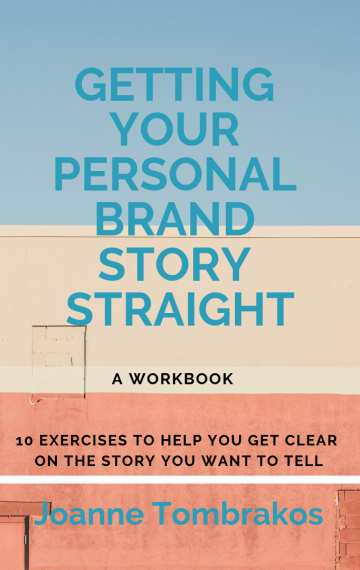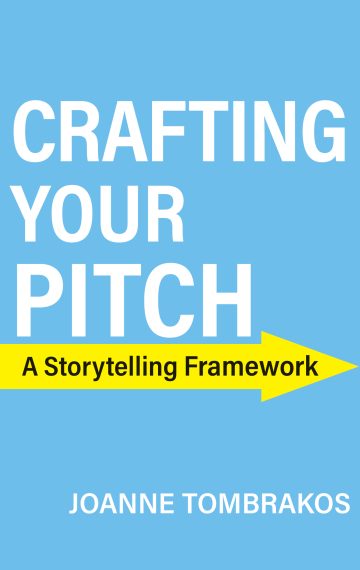I get ideas. I let them percolate. I threaten that one day soon I will put the idea into action.
Sometimes I talk about them for a while. Sometimes the while is so long that people stop listening. That’s sort of the road that let me to launching YOUR DIGITAL YOU. It’s also the road that brings me to today.
This idea has been percolating for a while – to start a series where I interview – mostly women and a few good men – who have put themselves in the scary space, took the road less traveled, did it their way, achieved success and used digital tools to help build their brand.
I won’t lie. My bigger idea is to make this a podcast. But I first need a moment to digest the technology learning curve I just endured to get YOUR DIGITAL YOU launched before I take on a new one.
So the first phase of this will be the written word because I am that anxious to get the Off The Grid series started!
I’m delighted that the kick off is with Smita Paul.
Smita is the Founder of Indigo Handloom based out of Oakland. I first met Smita several years back in a course we took together. I have watched in admiration the passion with which she has built and grown her business. We connected recently after I caught a glimpse of her foray using what I like to think might be the next big trend in mobile marketing – the Airstream Trailer.
Here is what this smart and articulate woman had to say about the socially conscious business she has created:
What is Indigo Handloom?
Indigo Handloom is a social enterprise with a mission to create beautiful products all made on traditional handlooms, preserving this endangered traditional craft and creating low-impact jobs.
How long have you been doing this and what gave you the idea to create this business?
I was a journalist when I first visited a handloom village. I was always fascinated with Indian textiles and was doing a story about the silk industry when my research took me there. I was impressed with the quality of work that could be done by people with a 4th-grade education or less, no written patterns or instructions and very few resources. Once I learned more about their life and the struggles of the handloom industry in general – I decided to work with them to create a new market for them in the west.
What would you say differentiates you as a brand?
None of our scarves or fabrics requires any energy to be made. Everything is done without the need for even one lightbulb! If you take the average collared shirt and break down the energy needed to run the mills to weave the cloth, cut the pattern out and then sew the shirt together – the energy for just the weaving part is 30%. that means that every shirt made with handloom fabric is already 30% less of a carbon footprint that any other shirt out there.
We also use fewer chemicals and washes than machine made cloth. About 60% of our production is currently using certified organic cotton. We’re on Kickstarter to get enough volume for our clothing so we can meet the minimum requirement to get more of the organic cotton in our products.
We are truly the world’s greenest clothing.
Let’s talk about your vision for the company. What’s next?
The vision for the company is to become what Wholefoods was to the organic food movement – a place where the baseline is higher quality food than any other grocery store chain. My vision is that we can make any number of products with handloom – from women’s clothing to baby blankets to tabletop wear. We have over 3000 original fabrics and hundreds of scarf styles – all of which have the baseline of a minimal carbon footprint. Our aesthetic is very in line with Anthropologie – except that our roots are based on not just traditional bottomline retail but in a mission to create jobs and beauty.
I feel like we are at the beginning of a movement around fashion and textiles – much like the beginning of the organic food movement. It’s one of the reasons for the Kickstarter campaign – to get the funding to move that forward. People are craving a return to a time when textiles were made with natural fibers. This is one of the reasons vintage clothing lasts and is so valuable – the fabric is just better quality.
You can feel the difference as soon as you touch the cloth. I often say I feel like our fabrics are like the heirloom tomatoes of the fashion industry. We’re not just polyester pumped out from a machine, our textiles have soul and texture than just can not be duplicated by machine.
So you’re now focusing on growing as an online retailer. How are you using social media to increase your brand awareness?
We launched the Kickstarter campaign two weeks ago. Beyond the financial goals, the idea is to look for like-minded people, those who are interested in learning more about fabrics and how they are made and to face the truly ugly side of fashion. Our focus is currently on Instagram, Pinterest, Facebook and Twitter.
I love that you recently renovated an Airstream trailer and have taken your wares on the road. I like to think it’s the newest trend in mobile marketing or at the very least the convergence of online with offline. Tell us about this.
I found an 1973 Airstream in a barn and hauled it back to Oakland. I’d been toying with the idea of opening a retail store but didn’t want to commit to a particular neighborhood or street. I’ve been looking for years and nothing felt right. Then I thought about all the great food offered in trucks these days and how if I was a chef, I would get a truck – not a restaurant. Then I thought, wouldn’t it be great to just drive to the places where there is a ton of foot traffic rather than taking the gamble on a retail lease.
So I looked and there is a movement of mobile retail taking hold in L.A. and NY. So I first looked at trucks but they didn’t seem to be big enough. Then I thought about myself as the customer – would I really want to change my clothes to try something on in such a small space. Finally, I thought the Airstream was the only way to go – I’ve always loved them and loved the sense of adventure they invoke. plus they’re extremely well designed and renovating a vintage one just got the designer inside me excited. So we gutted it and hired someone to rebuild the interior into a high end store. We now take the ‘store’ to the people – we go to festivals or urban markets. Right now we are doing it on weekends. It’s a great way to meet new people and introduce them to our brand.
What are your biggest challenges at the moment?
Honestly – it’s just getting the word out. I feel completely confident once people try our clothes on, they will want more. But getting the message out about the benefits of choosing handloom is the biggest challenge.
What comes the easiest for you?
Design. It literally keeps me awake at night – I have so many ideas. I love designing the textiles, scarves and now clothing. I even designed the Airstream interior – which I love – and it’s such a joy. Inspiration can literally strike at any moment. One of our best selling scarves was inspired by the interior of a hotel I stayed in in L.A. I take some of the scarves my mom has from the 70s and my mind will draw up five more ideas. It’s fun and sometimes overwhelming – so I’m so glad I have a business to fuel it all into.
Being an entrepreneur is not for the faint of heart. What made you do it?
Honestly, it was the weavers. I think if you’re honest with yourself and willing to open your heart to others – it’s hard to find what separates us. They are the same as any of my friends or family…they have great desires to create a better future for their children, they want to work with dignity and earn money to feed their families….it’s all the same. I look at them and after researching all the market forces I knew were coming their way, I knew I had to help them at least open a new market. A lot of the decisions I’ve made in my business are because I understand the need to create jobs above all else. I know the choices of a poor landless, mostly uneducated person is in India are very few.
How has or hasn’t your work and education experience prepared you for what you do today?
Well, being a journalist did lead me to my business so I guess in that sense it did prepare me. Other then that, I don’t think any formal education can really prepare you for a business such as mine. You just have to dive in – keep your priorities and values straight – and keep going. It’s been a wild ride and when I look back, it feels like my journalism days were like a walk in the park in comparison. Who knew handloom would have so much drama?
Do you have advice for wannabe entrepreneurs?
Just know the best laid plans will go astray…but that’s okay. Sometimes the best lessons are when you fall down. The times I’ve gotten into trouble – I am grateful for the lessons they provided – they force me to be creative. I think being an entrepreneur is one of the most creative ways to live – resourcefulness and flexibility and tenacity are crucial. With resourcefulness, you can find alternatives, flexibility allows you to respond to the market quicker than a larger organization. Tenacity – it’s a long game….best to understand that in the beginning. My parents had a tough business as well – and their advice when I was discouraged was always the same “just keep going.” and trust yourself to figure it out.
Do you Google, Bing or Yahoo?
Safari, Internet Explorer or Chrome?
Chrome
What is the App on your phone you can’t live without?
What is the one piece of technology you can’t live without?
iPhone
The best thing technology has added to your life?
To be able to work anywhere in the world
The worst thing?
When it doesn’t work!
What matters most to you?
Freedom – to be where I want to be and when I want to be and still be connected.
Where can we find you online?
Our website, Indigo Handloom and on Facebook, Twitter, Instagram and Pinterest @indigohandloom and of course Kickstarter!
My thanks to Smita for kick starting (no pun intended!) my Off The Grid Series. I do hope I can convince her to come back when this evolves into a podcast. For now I will leave you with a peak at the beautiful and very inspiring video created for the Kickstarter campaign. If you were moved as I was, this link will take you to where you can contribute!






I didn’t realize that trailers are the next big trend in mobile marketing. I would think that it is a great way to expose yourself and your products to a lot of different audiences. It seems like taking a trailer across the country is a great way to show off your company to the world.